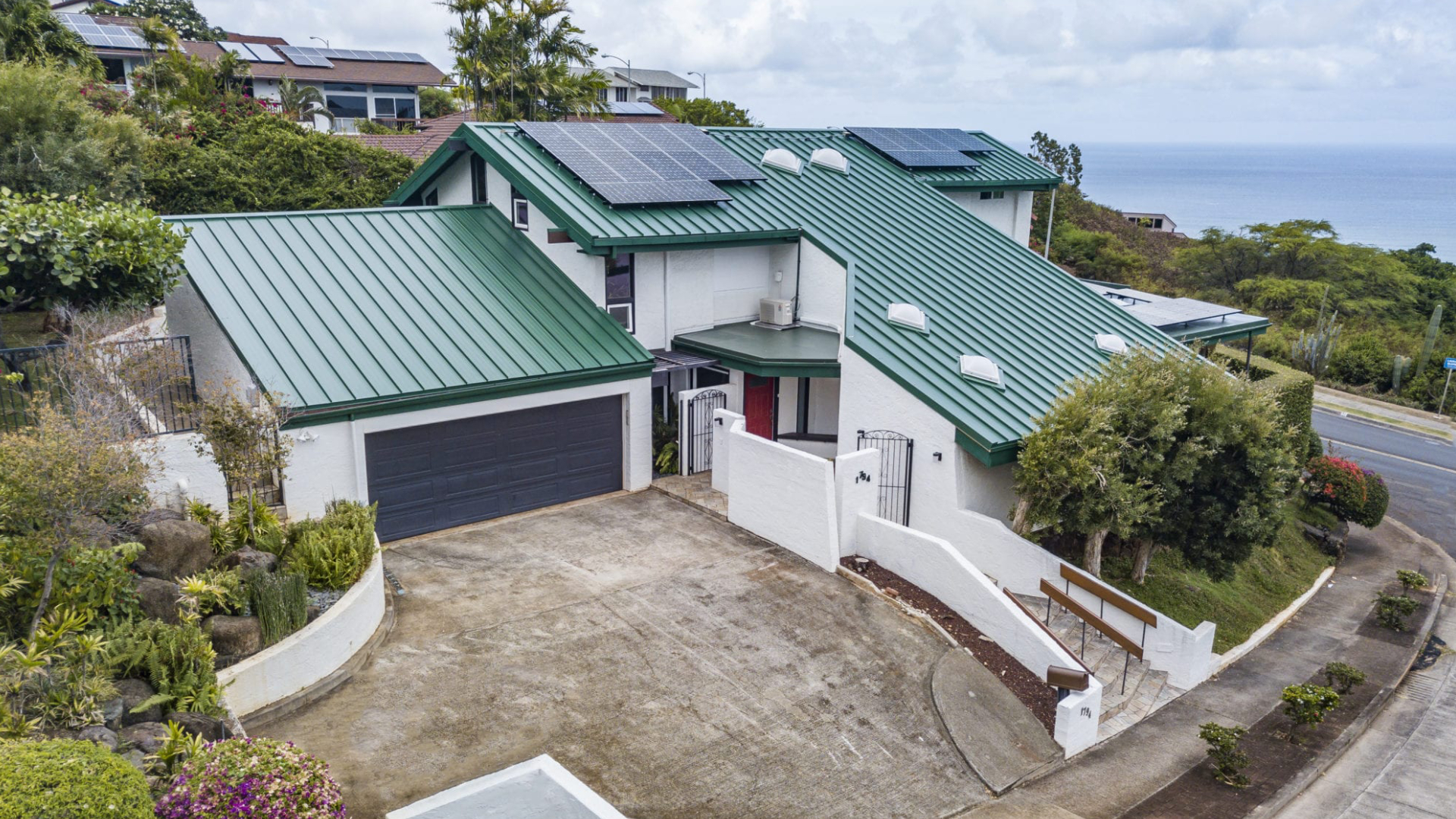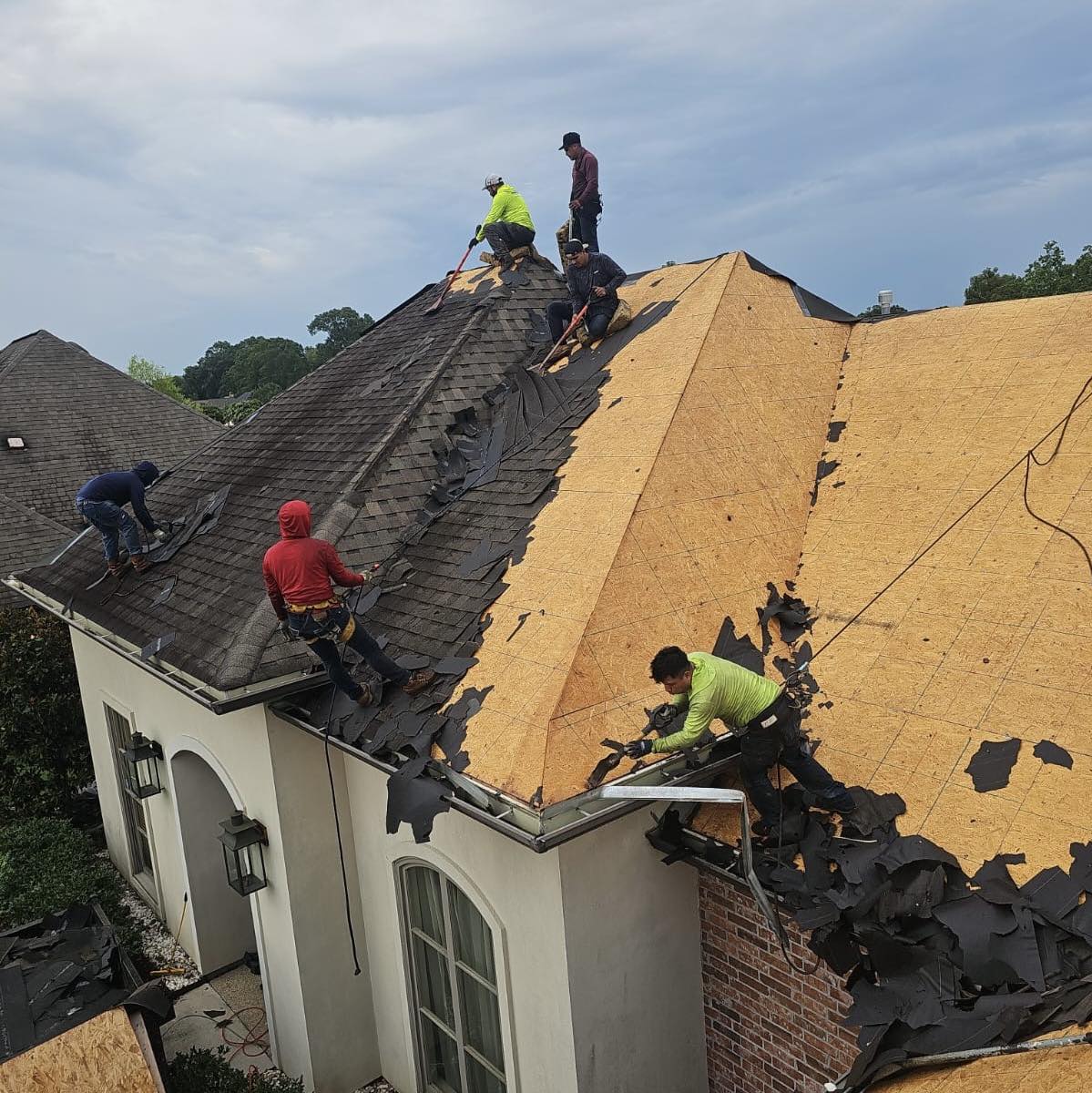Uncover Usual Roof Covering Troubles and Just How to Address Them Successfully
When it comes to your roof, identifying troubles early can conserve you time and money. What specific actions should you take to assure your roof continues to be in top condition?
Determining Roofing System Leaks and Their Reasons

Following, examine your roof from the exterior. Look for missing out on or split ceramic tiles, rusted flashing, or damaged seamless gutters.
During hefty rain, observe your roof covering for any type of pooling water or drips. This can reveal leaks that could not be visible throughout dry problems. By staying vigilant and consistently examining your roofing system, you can capture leaks early and protect your home from further damage.
Taking care of Missing or Damaged Shingles
When you observe missing or damaged shingles, it's important to act promptly to stop additional problems. You'll desire to identify the extent of the damage, fix any missing out on tiles, and consider precautionary upkeep suggestions to maintain your roof covering in leading shape. Taking these steps can conserve you money and time in the future.
Identifying Roof Shingles Damages
Although shingles are developed to stand up to the components, they can still endure damage in time, causing possible leakages and pricey repairs. To determine roof shingles damages, beginning by examining your roofing for missing, split, or curled roof shingles. Try to find indications of staining or granule loss, which can indicate deterioration. Take notice of any areas where roof shingles are raising or bending, as these can develop vulnerabilities. It's likewise a good idea to look for water discolorations or mold and mildew on your ceilings and walls, as these might signal leakages stemming from damaged tiles. Frequently monitoring your roofing system, especially after serious climate, can assist you catch issues early and maintain the integrity of your home.
Fixing Missing Tiles
After spotting roof shingles damages, the following step is addressing any type of missing out on or harmed tiles quickly to protect against further problems. Begin by evaluating the afflicted location and establishing the amount of tiles need replacement. If you can, climb onto your roofing system safely, putting on appropriate gear. Remove any kind of damaged shingles thoroughly making use of a crowbar. Once you have actually removed the location, slide in the new shingles, ensuring they line up with the existing ones. Protect them with roof nails and use roofing adhesive for included security. Do not neglect to seal the edges to stop water seepage. If you're awkward with the fixing, it's wise to call a professional. Acting quickly will aid maintain your roofing's stability and prolong its life expectancy.
Preventive Maintenance Tips
How can you maintain your roofing system in top shape and stop shingles from going missing out on or getting harmed? Check your roof at the very least twice a year and after extreme weather (roofers oahu).
Keep seamless gutters clean and without debris to ensure appropriate water circulation and prevent roof shingles damages. Trim looming branches to minimize the danger of them scratching against your roof covering during tornados.
Consider applying a safety sealant to prolong your tiles' lifespan. Finally, if you observe any problems, resolve them promptly to prevent costly repair services later on. Taking these safety nets can save you money and time while assuring your roof stays resilient and reliable.
Comprehending Roof Ventilation Issues
Appropriate roofing air flow is essential for maintaining the durability and efficiency of your roofing system, as it aids manage temperature level and dampness levels in your attic. Without sufficient ventilation, you might face problems like extreme warm accumulation, causing premature tile deterioration, or increased moisture that can trigger mold and mildew development and timber rot.
To examine your roofing ventilation, check for indications of overheating, such as deformed tiles or a warm attic room. Try to find blocked vents, which can restrict air movement and catch warmth. You need to ensure your intake and exhaust vents are well balanced, permitting for proper air exchange.
Dealing with these concerns quickly can safeguard your roof and conserve you from costly fixings down the line. Stay proactive in keeping your roofing system's air flow to safeguard your home.
Addressing Roof Covering Moss and Algae Growth
While you might value the all-natural look of moss and algae on your roof, these organisms can bring about significant troubles if left uncontrolled. They trap wetness, which can cause shingle wear and tear and leakages. To tackle this issue, begin by getting rid of any type of visible growth. Make use of a soft-bristle brush to gently scrub away the moss and algae, bewaring not to harm your roof shingles.
Next, think about applying a specialized roofing cleaner or a blend of water and bleach to kill remaining spores. Normal examinations and upkeep will help prevent moss and algae from returning, guaranteeing your roof stays in good shape for years to come.
Repairing Storm Damage and Wind Issues
After a tornado, it's crucial to examine your roofing for damage created by high winds and heavy rain. Start by checking for missing out on or broken shingles, as these are common casualties.
Try to find any type of drooping areas, which might indicate water build-up or structural problems. If you find any particles, like branches or leaves, remove them meticulously to prevent more damages. If your rain gutters are obstructed, clear them to ensure correct drainage.

For little repair work, you could handle it on your own, but do not wait to call a professional for substantial damage. Bear in mind, acting rapidly can conserve you from larger problems down the line, so take that analysis seriously and deal with any kind of concerns immediately.
Recognizing Indications of Structural Damage
Exactly how can you inform if your roofing system is dealing with architectural damages? Begin by trying to find noticeable sagging or dips in your roofline. These indicators indicate that the underlying structure may be endangered. Next off, look for splits or voids in the walls or ceiling, as these can signal moving or resolving as a result of roof covering issues. Take notice of leaks or water stains, especially in areas where the roofing satisfies wall surfaces. If you observe missing out on or damaged tiles, it's vital to address them quickly, as they can expose your roofing system to additional damage. Also, examine your attic for any signs of daylight glancing via, which might suggest your roofing's stability is at risk. Ultimately, listen for uncommon creaking or standing out noises, as they may indicate architectural anxiety. If you see any one of these indicators, it's time to speak with a roof professional for a comprehensive evaluation.
Routine Maintenance Tips for Long Life

Routine Evaluations Value
Considering that a roof covering is your home's initial line of protection versus the components, normal he has a good point examinations are necessary for try this preserving its stability (roofing companies honolulu). You ought to examine your roof covering at the very least twice a year, ideally in springtime and loss, to capture possible problems early. Look for missing out on or harmed roof shingles, signs of leakages, and any kind of debris that could cause problems. Pay close focus to areas around chimneys, vents, and flashing, as these prevail vulnerable points. If you discover anything uncommon, don't think twice to get in touch with a professional for a thorough evaluation. Staying up to date with these evaluations can prevent pricey repair work down the line and lengthen your roof's lifespan, ensuring your home continues to be risk-free and audio for many years to find.
Correct Rain Gutter Upkeep
Normal roofing system assessments naturally lead to the importance of appropriate gutter upkeep. Check your rain gutters for leaks or corrosion; they can trigger water damages to your roofing and home. By complying with these tips, you'll expand your seamless gutters' life expectancy and shield your roof.
Often Asked Concerns
How Can I Pick the Right Roof Material for My Home?
To pick the ideal roofing product for your home, think about climate, sturdiness, and appearances. Research study options like asphalt roof shingles, steel, or tile. Think regarding maintenance requirements and spending plan to find what fits you finest.
What Are the Signs I Required a Roof Covering Substitute Rather Than Repair?
If you observe widespread leaks, drooping, or missing roof shingles, you could need a roofing system substitute. Additionally, if your roofing's nearing its life-span or has considerable damages, it's time to ponder a complete substitute rather than just repairs.
Just how Typically Should I Set Up Specialist Roofing System Examinations?
You should schedule expert roofing inspections at the very least yearly, preferably in springtime or loss. This aids visit catch prospective problems early, ensuring your roofing continues to be in good problem and prolonging its lifespan.
Can I Mount a New Roofing System Over My Old One?
You can install a new roof covering over your old one, yet it's important to examine neighborhood structure codes and guarantee the existing roofing's problem is audio. This strategy can conserve time and cash, however consider potential problems.
What Is the Average Lifespan of Various Roofing Materials?
The average lifespan varies by product: asphalt shingles last 15-30 years, metal roofs can last 40-70 years, while tile or slate roof coverings might surpass 50 years. Choose intelligently based upon your climate and budget.
Conclusion
By staying vigilant and addressing common roof covering problems promptly, you can secure your home and expand your roofing system's life-span. With a little regular maintenance, you'll not only guard your investment yet also enjoy peace of mind recognizing your roof is in top form.